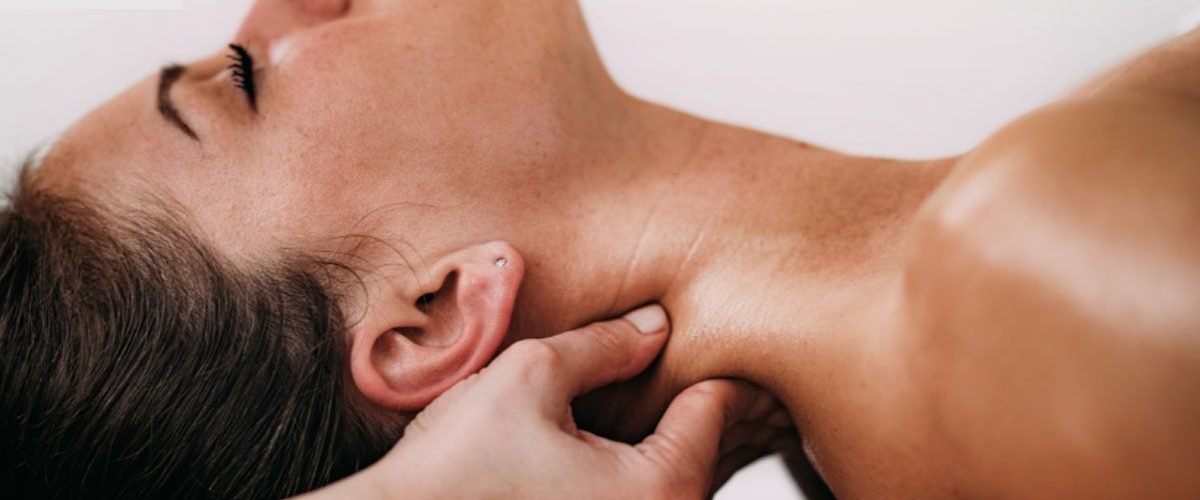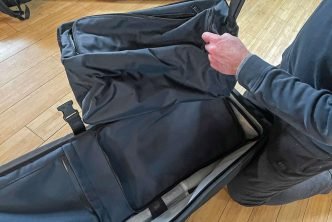Table of Contents
Can a Massage Help with Tech Neck?
The short answer: Yes, absolutely.
If you’re reading this hunched over a device, you’re experiencing the exact posture causing millions to develop tech neck. The average American spends over 4 hours daily on phones and tablets. 73% of college students and 65% of remote workers report neck pain.
That dull ache isn’t just temporary discomfort. Tech neck is a real medical condition that can lead to chronic pain and spinal problems if untreated.
Massage therapy offers proven relief. Recent research involving 549 participants shows specific massage techniques significantly reduce tech neck pain. The consensus is clear: myofascial release works.
This guide shows you exactly how massage helps. You’ll discover effective professional techniques, learn simple self-massage methods you can use immediately, and understand when to seek treatment.
Ready to get relief from that persistent neck pain?
What Is Tech Neck?
Tech neck (also called text neck) is a postural syndrome caused by prolonged device use. It happens when you repeatedly tilt your head forward and down to look at screens.
Here’s the physics behind the problem: your head weighs 10-12 pounds. When positioned correctly over your spine, those muscles easily support this weight. But for every inch your head moves forward, the effective weight doubles.
Look down at your phone right now. Your neck muscles are suddenly supporting 20-24 pounds of pressure instead of 12. Hold this position for hours daily, and those muscles become overworked, tight, and painful.
Common tech neck symptoms:
- Persistent neck pain and stiffness
- Tension headaches starting at the skull base
- Shoulder and upper back pain
- Reduced range of motion
- Sometimes arm tingling or numbness
The condition affects the sternocleidomastoid (front neck muscle), upper trapezius (neck-to-shoulder), and suboccipital muscles (skull base). With screen time averaging 7+ hours daily for many adults, tech neck has become an epidemic affecting millions worldwide.
How Massage Helps Tech Neck
Massage therapy targets tech neck through three key mechanisms that address the root causes of your pain.
- Releases Muscle Tension
Forward head posture creates overstretched, hypertonic muscles in your posterior neck and upper back. These muscles work overtime to support your misaligned head. Massage directly relaxes these overworked tissues.
In the front, muscles become shortened and tight from staying contracted. Targeted massage lengthens these tissues and restores normal function.
- Improves Blood Flow and Healing
Tight muscles compress blood vessels, reducing oxygen and nutrient delivery. Massage increases circulation, helping damaged tissues heal faster. Better blood flow also removes metabolic waste that contributes to pain and stiffness.
- Restores Natural Posture
When tight muscles finally relax, your body naturally wants to sit straighter. It’s not about forcing good posture – massage helps realign things so proper alignment feels easier, not like work.
Research backs this up. A meta-analysis of 10 randomized controlled trials with 549 participants found that myofascial release showed significant differences in pain reduction. The consensus among experts is clear: tech neck responds well to muscle release techniques.
Studies consistently show massage improves pressure pain thresholds and range of motion in people with chronic neck pain.
Best Types of Massage for Tech Neck
Not all massage techniques work equally well for tech neck. Research identifies three approaches that deliver the best results.
Myofascial Release
Experienced therapists offering massage in Lisle recommend myofascial release as the gold standard treatment, citing its superior effectiveness in clinical studies. This technique uses gentle stretching and sustained pressure on targeted fascia (connective tissue) to reduce pain and restore movement.
The technique works by breaking up adhesions and scar tissue that develop from repetitive strain. A therapist applies light pressure for extended periods, allowing tight fascia to slowly release.
Why it’s most effective: Tech neck creates restrictions in multiple tissue layers – skin, muscle, and deep fascia. Myofascial release addresses all three layers systematically, not just surface muscles.
Research shows significant pain reduction with this approach. Multiple clinical trials demonstrate its superiority over standard physical therapy for neck pain relief.
Deep Tissue Massage
Deep tissue massage uses firm pressure to reach deeper muscle layers and break up chronic tension patterns.
Best for: People with severe, long-standing tech neck pain who need intensive treatment. The increased pressure helps release stubborn knots that lighter techniques can’t reach.
Important note: You may feel sore for 1-2 days afterward, but this indicates the therapy is working on deeper restrictions.
Swedish Massage
Swedish massage uses gentle, flowing strokes to promote relaxation and improve circulation.
Best for: First-time massage recipients or those with mild tech neck symptoms. It’s excellent for stress reduction and general muscle tension without intense pressure.
Perfect starting point if you’re unsure about massage tolerance or prefer a gentler approach to pain relief.
Professional Massage Techniques
Professional therapists use specific, targeted techniques to address the exact muscles affected by tech neck.
Suboccipital Release
Your therapist focuses on small muscles at the skull base where many feel the worst tech neck pain. These muscles work overtime when your head positions forward.
The technique involves gentle pressure and stretching where your skull meets your neck. You’ll feel tension melting away in areas you didn’t know were tight.
Upper Trapezius Work
This muscle stretches from neck to shoulder. When tight, it creates that “carrying the world on your shoulders” feeling.
Your therapist uses kneading and pressure techniques to release knots along this muscle. Many clients feel immediate relief in both neck and shoulder tension.
Sternocleidomastoid Targeting
This front neck muscle becomes shortened and tight from constant forward posture. Treatment involves gentle stretching along your neck sides.
What to Expect
Sessions typically last 60-90 minutes. Your therapist will assess posture, identify problem areas, and customize treatment. Communicate about pressure – effective treatment shouldn’t cause sharp pain.
Most people need 3-6 sessions for significant improvement, with maintenance visits every 4-6 weeks.
Self-Massage Techniques You Can Try
You don’t need a professional to start relieving tech neck pain. These simple techniques provide immediate relief.
Basic Pressure Point Technique
Find tender spots along your neck and skull base. Use your thumb to apply moderate pressure for 30-60 seconds on each point.
Start at skull base and work down. Press firmly enough that you “cringe a little” but stop before sharp pain.
Neck Roll with Pressure
Place both hands on your upper neck and shoulders. Apply downward pressure while slowly rolling your head side to side.
Hold pressure for one minute, then roll neck left to right three times. Switch directions and repeat.
Tennis Ball Release
Place a tennis ball between your neck and wall. Lean into the ball and slowly move up and down to target tight spots.
Safety Guidelines:
- Never cause sharp pain
- Start with gentle pressure
- Stop if numbness occurs
- Practice 2-3 times daily
- 5-10 minutes maximum per session
When to Seek Professional Help
While self-massage helps with mild tech neck, certain situations require professional intervention for proper treatment and faster recovery.
See a massage therapist or healthcare provider if you experience:
- Chronic pain lasting more than 2 weeks despite self-care efforts
- Severe headaches that interfere with daily activities
- Limited range of motion – difficulty turning your head normally
- Numbness or tingling in arms, hands, or fingers
- Pain that worsens instead of improving with gentle techniques
Professional treatment becomes essential when tech neck affects your work performance, sleep quality, or daily activities. A trained therapist can identify specific muscle imbalances and trigger points that self-massage cannot address effectively.
Expected timeline: Most people see noticeable improvement within 2-3 professional sessions. Complete relief typically requires 4-6 treatments over 3-4 weeks, depending on severity.
Integration approach: Professional massage works best when combined with ergonomic improvements, regular breaks, and strengthening exercises. Your therapist can recommend specific stretches and postural corrections.
Don’t delay treatment if symptoms persist or worsen. Early intervention prevents tech neck from becoming a chronic condition requiring longer, more intensive treatment.
Prevention Tips
The best tech neck treatment is prevention. Simple adjustments to your daily routine can eliminate the problem before it starts.
Ergonomic Adjustments
Raise your screen to eye level to eliminate downward head tilt. Your monitor should be arm’s length away with the top third at eye height. For phones, bring the device up instead of dropping your head down.
Take Regular Breaks
Follow the 20-20-20 rule: every 20 minutes, look at something 20 feet away for 20 seconds. Set hourly reminders to stand, stretch, and reset your posture.
Strengthen Supporting Muscles
Perform chin tucks daily – pull your chin back like creating a double chin. Hold for 5 seconds, repeat 10 times. This strengthens deep neck muscles that support proper head position.
Practice doorway chest stretches to counteract rounded shoulders. Stand in doorway, place forearms on frame, step forward to stretch chest muscles.
Posture Awareness
Think “ears over shoulders, shoulders over hips.” Check your posture hourly and make corrections. The more you practice good alignment, the more natural it becomes.
These prevention strategies work best when combined with regular massage for complete tech neck management.
Conclusion
Yes, massage absolutely helps with tech neck. Research involving hundreds of participants confirms that myofascial release and targeted massage techniques significantly reduce pain and restore normal movement.
The key is choosing the right approach for your situation. Start with gentle self-massage techniques for immediate relief. If pain persists beyond two weeks or interferes with daily activities, seek professional treatment.
Remember: prevention beats treatment. Combine massage therapy with proper ergonomics, regular breaks, and strengthening exercises for lasting results.
Your neck pain doesn’t have to be permanent. Take action today – try the self-massage techniques, adjust your workspace, and consider professional help if needed.
Ready to reclaim your comfort? Start with the simple pressure point technique right now.





